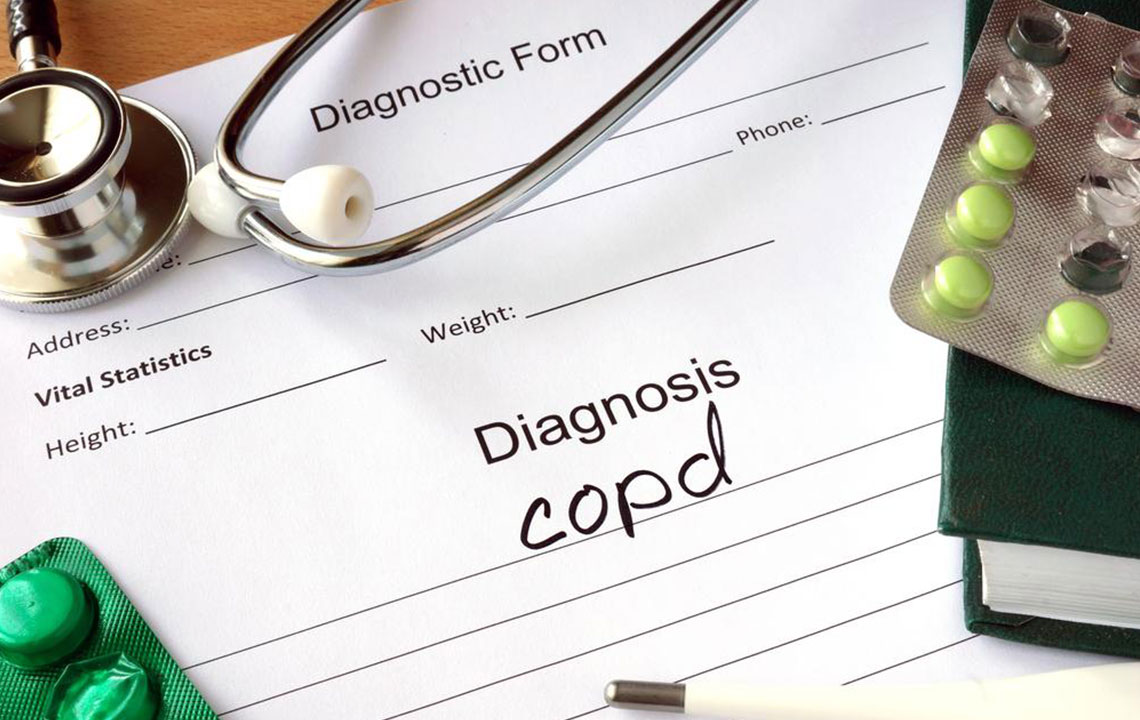COPD – Symptoms, Risk Factors, and Stages
COPD is an acronym of Chronic Obstructive Pulmonary Disease. COPD describes lung diseases like chronic bronchitis, emphysema, refractory or non-reversible asthma and some form of bronchiectasis. COPD is characterized by enhanced breathlessness. COPD takes time to develop and has several stages. In the early stages of the disease, the symptoms are not noticeable. The symptoms are more pronounced in the developed stages of the disease. Contact the doctor as soon as you notice COPD symptoms.

Symptoms of COPD
COPD is characterized by the following symptoms:
– Enhanced breathlessness
– Wheezing
– Frequent coughing with or without sputum
– Tightness in the chest
Risk factors and common causes of COPD
– Inhaling pollutants and that includes cigarette smoking (active or passive).
– Chemicals, fumes, and dust found in the work environment contribute to the occurrence of the disease.
– A person’s bad genes can be the cause of the disease.
– To sum it up, smoking, environmental factors, and genetic factors result in the occurrence of the disease. Early detection of the disease and subsequent treatment is advisable for patients with COPD condition.
– There are several stages of COPD. Early detection of the disease can prevent lung impairment or death. In this context, it is important to understand the way the stages are detected. There is the GOLD staging system, and there is the BODE index. Doctors use the BODE index as it helps to understand better the severity of the symptoms or how COPD affects your life. There are other types of lung function tests that help in identifying the various stages of COPD.
The stages of COPD
The stages of COPD vary from mild to severe. It affects different persons differently. It is a progressive lung disease, and if it occurs, then it has the potentiality to worsen anytime. The physician categorizes the different stages of COPD, based on the symptoms of COPD and results from lung infection tests.
For some, COPD takes time to develop. Regular check-up from the doctor is important even if you are feeling well at any point in time. Your doctor tracks your condition from time to time. The doctor can even advise you to perform a series of pulmonary function tests, CT scans, chest X-rays. It is up to the doctor to check the functioning of the lungs, the working of the COPD treatment plan. The physician can change the treatment at any stage of the disease.
The following are the various stages of COPD:
Mild COPD is also known as stage 1
In the mild stage of the disease, people may not be aware of the disease. They continue their day to day activities. Some people experience a cough.
Moderate COPD or stage 2
In stage 2, people suffering from the disease experience mucus production and coughing. People experience problems in breathing and hence seek medical assistance. At this stage, the doctor recommends the use of bronchodilators for better breathing. The doctor may also recommend pulmonary rehabilitation.
Severe COPD or stage 3
In stage 3 of the disease, the quality of the patient’s life is adversely affected. The function of the lung declines, patient experiences difficulty in breathing. COPD occurrences make it challenging for the patients to enjoy life normally or participate in the day to day life activities. At this stage, the patients feel fatigued, and they have difficulty while exercising.
Very severe COPD, also known as stage 4
The end stage of the disease affects the quality of life of the patient profoundly. Breathing issues can become life-threatening. At the end stage of the disease, people suffering from the disease have trouble inhaling oxygen. Low levels of oxygen in the blood cause severe health issues in the patient. At this stage, the doctors may prescribe oxygen therapy, to increase the level of oxygen in the blood.
To treat this disease, it is important for the doctor to understand the various stages of COPD. As the disease progresses, work with the doctor to change the plan of treatment, if required. Take a note of the changes in the symptoms, the thing that triggers the symptoms to the worse and the way COPD affects your everyday ability to do regular activities. Consult your doctor if you observe changes in health or if you feel unwell.
If you are under a medical supervision and there is a treatment plan in place, then consult the doctor and verify whether alternative therapies are useful. Consider lifestyle changes, stem cell therapy, herbs, and supplements to treat the disease from the roots. In this context, it is important to say that stem cell therapy can be useful to improve the functioning of the lungs, alleviate breathing troubles, and improve breathing and the quality of life. If you are suffering from COPD, then do consider stem cell therapy as it is useful to cure the disease and ensure a better quality of life.


